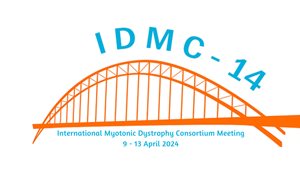
Many children are afraid of needles. This causes stress and unrest, which causes a blood draw to take longer and sometimes to go less well. A study conducted by Radboud university medical center shows that an alternative form of communication reduces anxiety during a blood draw. In addition, it considerably shortens the duration of the procedure.
I don't want a puncture! This is familiar to every parent. Most children are simply afraid of a blood draw. This causes a lot of stress, especially for children with chronic illnesses. They often undergo blood draws so that doctors can keep track of their disease. Parents and healthcare providers also experience negative consequences from the fear of needles in children. It causes a lot of unrest, which means that the blood collection procedure takes longer and sometimes goes less well. There must be a way to improve that, thought pediatrician Lonneke Aarts of the Radboud university medical center Amalia Children's Hospital.
Negative words
Aarts studied a group of more than a hundred children who underwent a blood draw. In half of them, the healthcare providers who carried out the procedure used an alternative form of communication. In the other half, traditional communication was employed. The alternative form of communication consists of several aspects. For example, making real contact with the child is very important, as this creates trust. Avoiding negative words such as puncture and anxious is also crucial.
‘So we call it a blood draw instead of a puncture’, says Aarts. 'And we no longer say things like: this may hurt for a while but it will be over soon, or are your anxious? By using such language, we assume a lot, while that may not apply to the child at all. You make it even more tense for children who were anxious already. And children who were relaxed think: apparently, I have to be nervous. And then they will be.'
Win-win-win situation
The alternative form of communication had positive effects. For example, it almost halved the anxiety compared to the group of children that was approached in the traditional way. Children from both groups nevertheless still reported the same level of pain. But with less than two on a scale of ten, pain was very limited anyway. ‘That is probably due to the use of a topical anesthetic in all children’, says Aarts. ‘This may have precluded us from finding an effect of the alternative form of communication on pain.’
An there is more good news: the alternative form of communication shortened the duration of the blood draw by two and a half minutes. The procedure therefore only took six minutes. This is remarkable, because it was expected that this way of communicating would actually take more time. Aarts has an explanation: ‘We used to explain the entire procedure to the child. We told them all about what they might feel or experience. We do not do that anymore. We make contact, ask if they can climb on the table and if mom or dad can help. Then we chat about hobbies, sports, or school, and blood is drawn in the meantime. Due to the reduced anxiety, the procedure also goes much smoother and quicker. Therefore, it really is a win-win-win situation for the child, parents and healthcare providers.’
About the publication
This study was published in the European Journal of Pediatrics: Therapeutic communication improves patient comfort during venipuncture in children: a single‑blinded intervention study. L.A.M. Aarts, G.J. van Geffen, E.A.L. Smedema, R.M. Smits. DOI: 10.1007/s00431-023-05036-7.
-
Want to know more about these subjects? Click on the buttons below for more news.
More information
Related news items

14th International Myotonic Dystrophy Consortium Meeting Brings Hope for Treatment International leaders share new insights in Nijmegen; Family Day
4 April 2024New developments, treatments, and research will be discussed at the 14th International Myotonic Dystrophy Consortium Meeting (IDMC-14) at De Vereeniging in Nijmegen. This 5-day meeting (9-13 April) concludes on April 13th with a Family Day for patients with myotonic dystrophy and their loved ones.
go to page
Nijmegen researchers find new genetic cause bubble boy disease SCID Genetic new born screening SCID can be further refined
19 March 2024Researchers from Nijmegen and Newcastle discovered a new genetic mutation leading to severe combined immune deficiency disorder (SCID). It’s the first time a mutation in the proteasome, a molecular shredder, has been linked to this serious disease.
go to page




